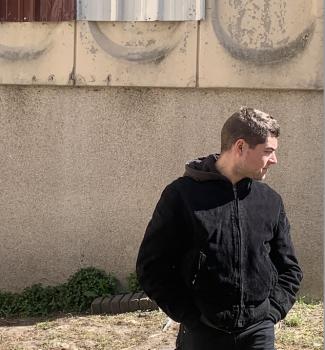Clovis Bataille | Exhibition Coming Soon
Composed of assemblages, sculptures, photographs and installations, Clovis Bataille’s work explores notions of architecture, social structures and urbanism.
Using salvaged and sometimes reassembled materials and images, Clovis Bataille seeks to identify processes of cohabitation, alienation, discipline and disorder.
His work has been shown in group exhibitions (Lafayette Anticipations, ExoExo, Fitzpatrick gallery, 3537, London Science Museum Late) and solo exhibitions (Petrine in Paris, Pole Gallery in Paris and London).
Transcript
My name is Clovis Bataille and I'm an artist.
My work essentially involves a look at what makes up the urban environment. It can be architecture, it can be behaviours between people, actions that take place in the street. I'm interested in structures, in the different hierarchies that take over the world, in urban environments, in cities. I'm interested in the links between them and the contradictions that can sometimes arise. There is something rather important for me in my practice, is to take an interest mainly in the elements that have already been used or things that have been left a little to one side or materials that people can throw away or that no longer have any use. And so this series of works is partly based on that. That's one of the ideas behind it. This series of works is about entrances and exits. It's about channelling, energy and protection. These signs were originally placed on shop windows to protect them or to block a passage, or to divert a passage, or deflect an action, whether it's on these shop fronts or buildings, or in a construction context construction sites to block access to an unfinished area or protect the people who work on the site. I'd say they have a regulating effect. It's much the same on the street. There are also notions of energy that can happen in the streets that interest me and concern us all.
And of course, the syringes concern me personally: a question of transmitting or channelling energy or of capturing energy and weakness, strength...
